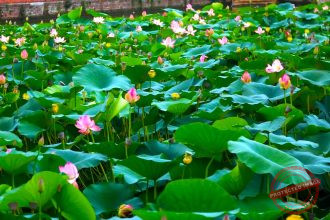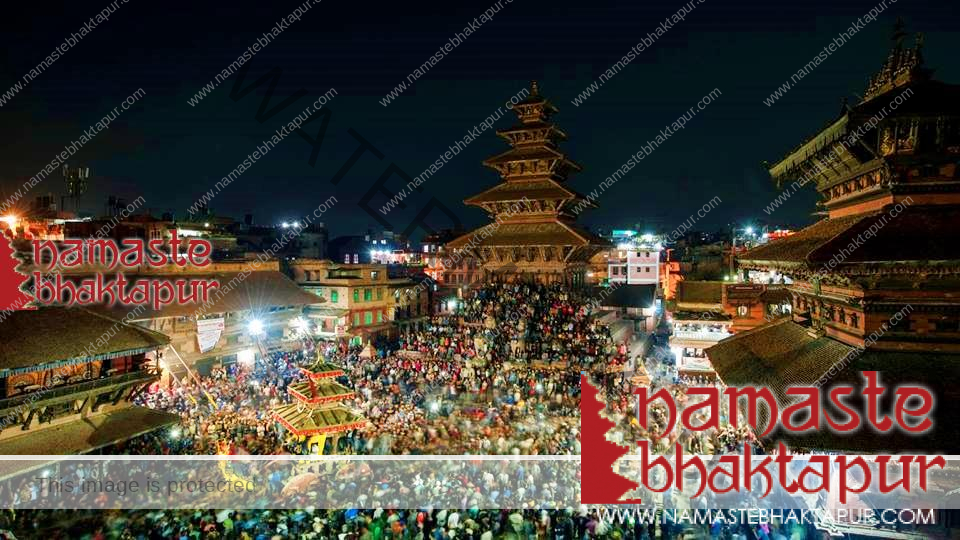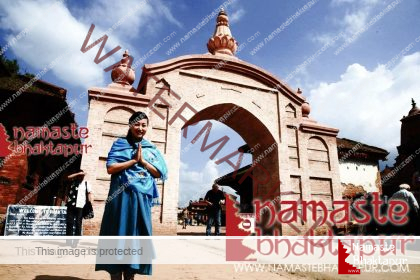Today is Gathamangal or Ghantakarna ,Gathamughafestival in the Newar community, particularly in Kathmandu Valley. Shrawan Krishna Chaturdashi is the date of the celebration (the fourth day of the waxing moon in the Nepali month Shrawan as per the lunar calendar).This celebration is regarded the prelude of a succession of other festivities observed by the Newarcommunity, according to cultural tradition. The event commemorates the triumph against a men-eating demon known as Gathamangal. People build a three-legged figure of Gathamangal out of green Narkat (Arundo donax) bamboo, and wheat straw in the morning and place it at road crossings. Early this morning, people take holy baths, conduct prayers and worships, and clean their homes and courtyards. The kids set up a road toll with a rope and solicit for money (alms) from passing motorists. The effigy of Ghantakarna is dragged to a distance and burned at night.
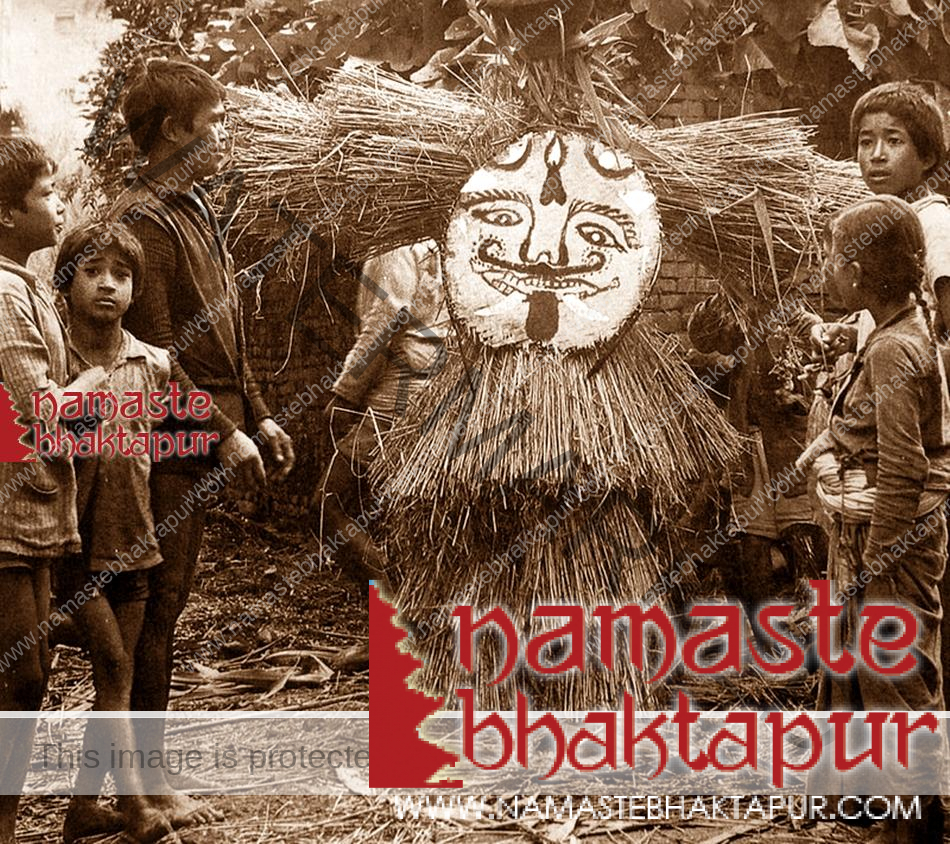
According to the Gopal Vamshawali text, Gathamangal represents Bhairab, Lord Shiva’s furious avatar. It is also used to signify the three Gunas, namely Satwa, Raja, and Tama (quality, attribute, or property). The gunas are a central idea in practically all Hindu philosophical traditions. According to this worldview, there are three gunas that have always been and will continue to be present in all objects and beings in the world. Satwa (goodness, constructive, harmonious), raja (passion, active, confused), and tama (passion, active, confused) are the three Gunas (darkness, destructive, chaotic).
The newlywed spouses are expected to bow down to Gathamangal. It is believed that worshiping it is necessary for protection against trials and adversity.
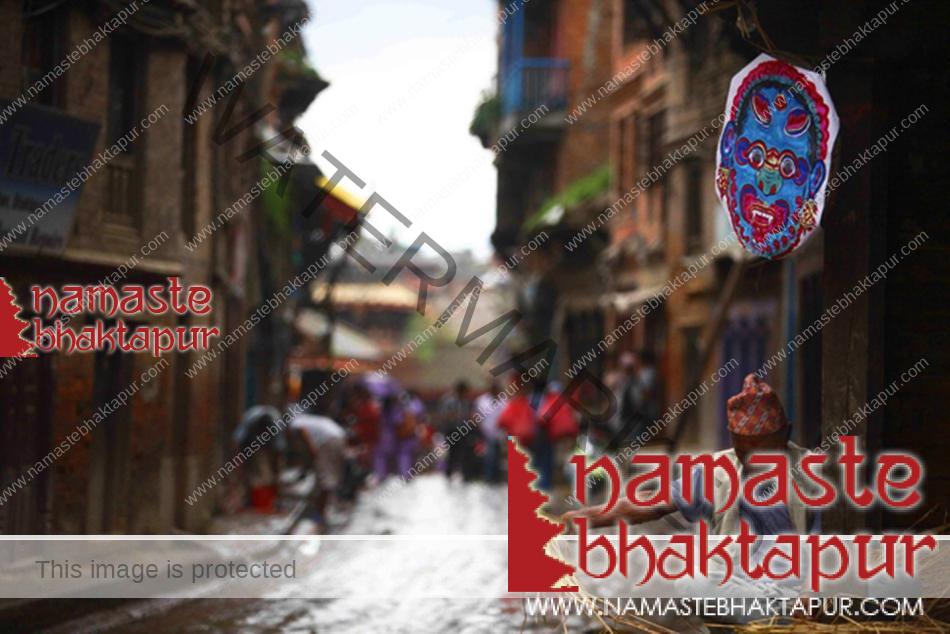
On the occasion of the Ghantakarna or Gathemangal festival, people began flocking to various gods and goddess shrines in Bhaktapur early this morning to worship. They doused their homes with holy water brought from the shrines.
Gathemangal is also known as ‘Sinaja Byangkegu,’ or the event commemorating the end of rice planting season. The Newars begin teaching the novices their traditional cultural and religious dances as well as musical instruments on this day.
Gathamugha celebration is thought to have originated the festivities in the Newari tradition. According to this, after Gathamugha, Nag Panchami, Chotha (Ganesh Chaturthi), and Indrajatra (Pulukisi Jatra), Gai jatra(Sa:Paru), and Dashain (Mohani Na:kha),arrive gradually.

How does Gathamugha come to be?
Gathamugha is manufactured from reeds and reeds collected from the villagers. The skeleton is made out of reeds and is formed like a reed. A big fearsome visage of Gathamugha has been painted at Nanglo. Somewhere, a clay head is sculpted and painted. Wear butterfly garlands made of cloth. Spreading straw on green sticks and sticks creates male genitalia. Cotton batter is hanged as well. At Doboto and Chaubato (Road Junctions), the holiday is commemorated by the burning of the Gathamugha , which is made out of many colorful fabrics and patas.
Guthi and Dafabhajan members used to play bajagaja and others used to go along with him and utter various vulgar obscenities while going to burn Gathamugha .
The Kya Macha Parba(Male’s Festivals) celebration is also known as the Gatha Muga Cha: Re (Gathamangal or Ghantakarna).
Meanwhile, Gatha Muga Cha: Re (Gathamangal or Ghantakarna). in Bhaktapur is a sign of the beginning of the festive season. In addition, the Nava Durga goddesses’ rebirth process begins. The Nava Durga mask dancers went to the house of the revered Prajapati people on the same day to inquire about where they can get the dark tinted clay for mask manufacturing. Following the Bhagasti, people began to focus on rice planting and other agricultural tasks. Even at their homes, people avoid playing musical instruments during the monsoon season. That’s it, for a month or maybe longer. As the first festival of the year, this day reconnects everyone with their musical instruments.


